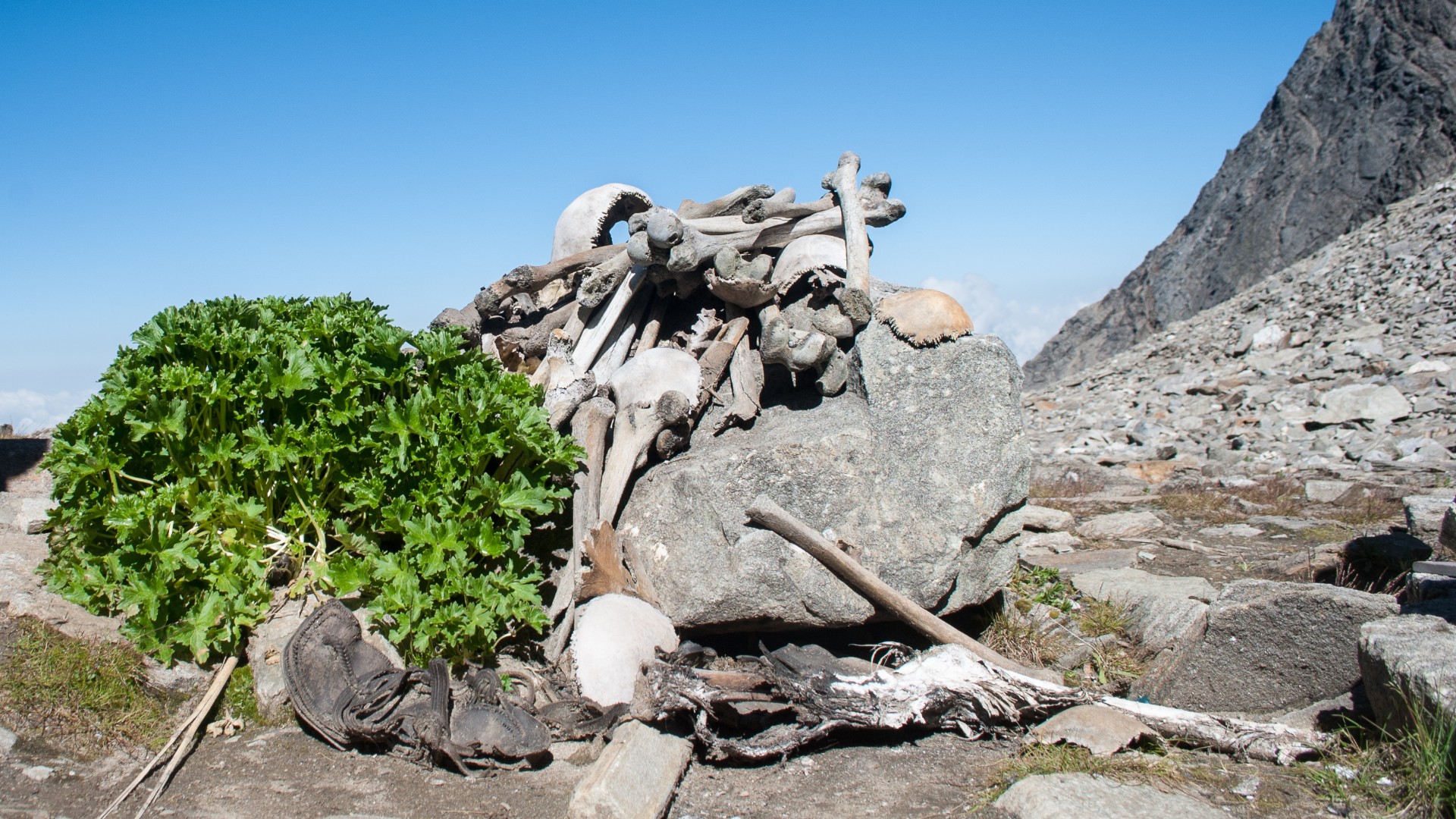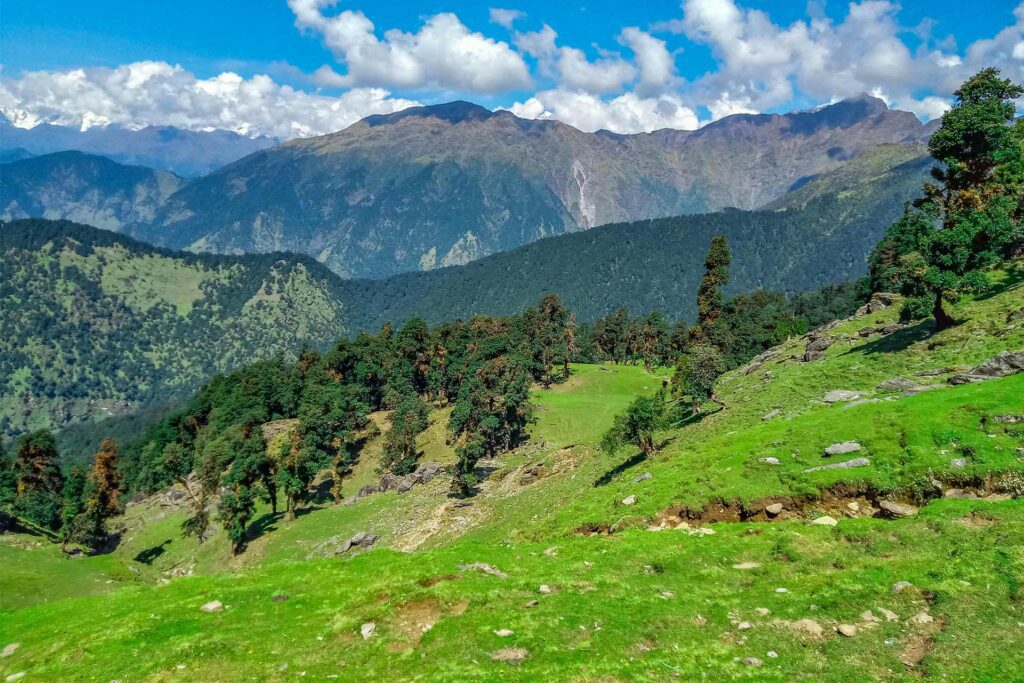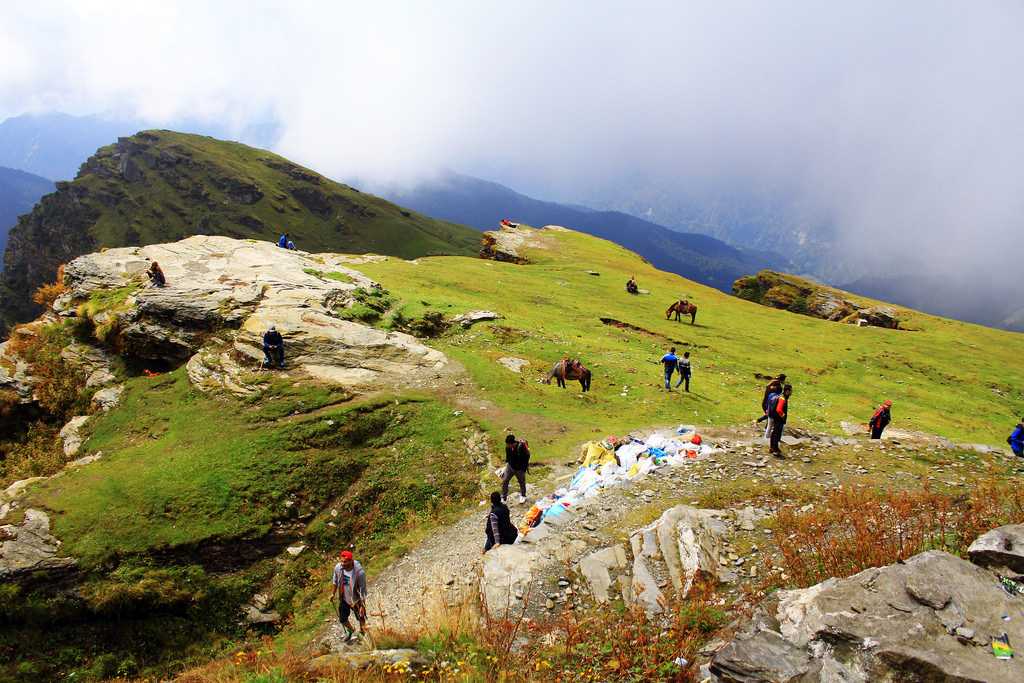Everything You Need to Know About Roopkund Lake Trek in 2025-26
Published on June 22, 2025
Roopkund is a high-altitude glacial lake (5,029 meters) located in the Chamoli district of Uttarakhand, hidden within the folds of the Nanda Devi Biosphere Reserve. But it’s not just the snow, not just the trek — it’s the skeletons.
Yes — Roopkund is globally known as “The Skeleton Lake”, where hundreds of human bones mysteriously lie frozen around the lakebed, visible when snow melts.
And in 2025–26, this trek is more than a physical journey — it’s a walk into a historical riddle, into nature’s cathedral, under skies that feel ancient.
Where is Roopkund Lake Located?
- State: Uttarakhand
- District: Chamoli
- Altitude: ~5,029 meters (16,500+ ft)
- Base Camp: Lohajung
- GPS Location: Inside the Nanda Devi National Park
Roopkund sits below Mt. Trishul and Nanda Ghunti, surrounded by alpine meadows, ridges, and deep cultural reverence.
What’s the Real Story Behind the Skeletons?
A Himalayan Mystery Etched in Ice, Faith, and Bone
*“They did not burn.
They did not vanish.
They stayed.
As if the mountain chose to remember.”*
High in the Himalayas, hidden under layers of snow, mist, and myth, lies a lake unlike any other — Roopkund.
Frozen for most of the year, but when it thaws, it reveals a secret that makes your heart pause:
Hundreds of human skeletons.
Scattered along its rim. Preserved for over a thousand years.
Some with skin. Some with hair. Some with jewelry still clinging to bone.
All surrounded by silence.
Roopkund is not just a destination.
It’s a cemetery without a funeral.
And even after decades of research, it refuses to give a clear answer.
???? Scientific Findings – What We Know
In the 1940s, a forest ranger accidentally stumbled upon what he thought were animal bones.
But what he had discovered was far more unsettling:
- 300+ human skeletons, some fully intact, at 5,029 meters elevation.
- Later carbon dating showed most died around 800–900 CE, but some were as recent as 1800s.
- A study by National Geographic and Indian researchers revealed:
- Two distinct groups of people
- One of South Asian (Indian) descent
- One of Mediterranean or Greek origin
Most skeletons had:
- Fractures only on the skull and shoulders
- No signs of attack or weapons
- No fire, no burial, no grave markers
The injuries were blunt-force trauma from above, consistent with one explanation:
A massive hailstorm — with cricket ball–sized hailstones — struck suddenly in this exposed glacial basin, killing people where they stood.
Sounds logical. Feels believable.
But why were they there at all?
Why would people from two different worlds end up in such a remote, sacred zone — only to die in one moment?
That’s where myth, belief, and culture step in.
???? The Legend – A Pilgrimage Turned Into Punishment
Locals tell a story passed down not in books, but in breath:
A powerful king — Jasdhawal of Kannauj — wished to make a grand pilgrimage to the shrine of Goddess Nanda Devi, hidden in the Himalayas.
But he didn't walk in silence.
He came with:
- Dancers
- Musicians
- Servants
- Wealth
- Even pregnant women — a complete royal entourage.
He believed devotion could be expressed with spectacle.
But the Goddess of the Himalayas does not accept arrogance.
She is fierce. Pure. Ancient. And her path is one of humility, not celebration.
At Roopkund — a sacred point along her route — the Goddess struck.
A storm of divine wrath — hailstones as heavy as stones — rained down from the sky.
One by one, the king’s entire procession fell, shattered and silenced.
The king died. His dancers died.
Even the unborn child died.
Their bones still lie there, untouched by time — a warning to all who enter with ego.
???? Could It Be Both — Science and Story?
This is where Roopkund becomes more than a place.
It sits at the crossroads of:
- Science and spirituality
- History and mythology
- Nature and karma
Yes — hailstones may have fallen.
Yes — they may have died in a freak event.
But was it mere weather?
Or divine orchestration?
Did they walk into a storm — or into judgement?
The people of Uttarakhand don’t ask science to explain everything.
They believe:
“When you go too far up with pride, the Goddess will pull you back down.”
???? Symbolism Hidden in the Skeletons
|
Element |
Symbolic Meaning |
|---|---|
|
???? Dancers, music |
Distraction from inner devotion |
|
⚰️ No burial |
Death by divine will — untouched |
|
???? Skeletons preserved |
The mountain’s refusal to forget |
|
????️ Hailstorm |
Cleansing force from the sky |
|
???? Two races of bones |
Universal lesson – ego spares no one |
|
???? Silence of the lake |
Space for reflection, not answers |
???? Modern Trekkers Still Feel It
Even today, trekkers speak of:
- A sudden drop in conversation near Roopkund
- Wind that feels watched, not just cold
- Animals avoiding the lake zone
- Dreams of voices whispering at night
This isn’t superstition. It’s sensation.
Roopkund doesn’t scare you.
It asks you to lower your voice.
⚖️ How TourMyHoliday Treats This Site
- We do not allow music, shouting, or selfies near the lake
- We conduct a moment of silence when reaching Roopkund
- Our guides share the myth, the science, and ask trekkers:
“What did you bring here — reverence or rush?”
???? So What’s the “Real” Story?
Maybe the real story is this:
- People came with pride.
- Nature responded with power.
- The mountain remembered — and never moved the bones.
- So you would see them.
Maybe the skeletons aren’t there to scare you.
Maybe they’re there to slow you down, to remind you of your place, to honor the sacred — in land, in legacy, and in silence.
Trek Route to Roopkund – What’s the Path?
???? Classic Route (Delhi to Roopkund):
- Delhi → Rishikesh (Overnight by bus/train)
- Rishikesh → Lohajung (9–10 hrs mountain drive)
- Lohajung → Didna Village
- Didna → Ali Bugyal → Bedni Bugyal
- Bedni → Patar Nachauni → Bagubasa
- Bagubasa → Roopkund Lake → Junargali (optional)
- Return via same route to Lohajung
✅ Trek Distance: 40–50 km round trip
✅ Trek Days: 6–8 days
✅ Difficulty: Moderate to Difficult
✅ Camping: Alpine meadows, eco-zones
✅ Best Operator: TourMyHoliday
Best Time to Trek Roopkund (2025–26)
|
Season |
Months |
Highlights |
|---|---|---|
|
Spring |
May–Mid June |
Clear skies, green meadows, early snow patches |
|
Autumn |
Sept–Mid Oct |
Dry trails, best visibility, golden landscape |
❄️ Winter: Too much snow – lake is inaccessible
☔ Monsoon: Risk of landslides – not recommended
Spiritual Energy & Mythology of Roopkund
This trail is blessed by Goddess Nanda Devi — the mother-protector of the Garhwal Himalayas. Locals believe:
- She judges every traveler silently
- You must walk humbly, speak softly
- Roopkund is not to be conquered, but approached with reverence
Pilgrimages like the Nanda Devi Raj Jat Yatra pass through this route every 12 years. It is not just about walking — it’s a ceremony of surrender.
Is Camping Allowed in 2025–26?
Since 2018, camping is banned in alpine meadows like Bedni & Ali Bugyal to protect the fragile ecosystem. But don't worry:
- TourMyHoliday provides eco-lodges, dome tents, and guided routes compliant with forest rules
- Campsites are set just before protected zones
- Waste management is 100% responsible
???? Eco-trekking is the future — and it’s already here.
What to Pack for Roopkund Trek?
Mandatory Gear:
- Backpack (50–60L) + rain cover
- Trekking shoes (high ankle, waterproof)
- Layered clothing (thermals, fleece, down jacket)
- Gloves, woollen cap, UV sunglasses
- Trek poles, head torch, water bottles
- First aid kit, altitude sickness meds (Diamox optional)
- Personal snacks, toiletries, power bank
???? Always carry one extra day’s food and warm layer — Roopkund weather turns quickly.
How to Prepare Physically?
Roopkund trek isn’t technical but requires stamina & mental clarity. Start preparing 30–45 days before:
- Walk 5–7 km/day
- Climb stairs or hills with a loaded backpack
- Practice breath control
- Learn to carry weight + walk for 6 hrs/day
Evenings on the trek are cold. Nights are colder. But the silence? Absolutely worth it.
Is It Safe to Trek Roopkund in 2025–26?
✅ Yes, if:
- You’re with a certified trek leader or local guide
- You’re fit, layered, and hydrated
- You listen to altitude signals (dizziness, nausea, headache)
- You respect the mountain — not rush it
TourMyHoliday ensures:
- Oxygen cylinders
- Emergency backup
- Local coordination
- Medical trained staff
- Mythological briefings that keep your heart full
Why Roopkund is Unlike Any Other Trek
Roopkund isn’t just about nature.
It’s a mystery that walks beside you — quietly, patiently, deeply.
No other trek has:
- A lake filled with untouched ancient skeletons
- Divine stories passed down from priest to pilgrim
- Meadows like Ali & Bedni Bugyal, unreal in their peace
- The blessing of Nanda Devi, the silent mother of the Garhwal sky
TourMyHoliday's 2025–26 Roopkund Trek Package Includes:
|
Feature |
Details |
|---|---|
|
???? Transport |
Delhi → Rishikesh → Lohajung & return |
|
????️ Stay |
Guesthouses, eco-camps, homestays |
|
???? Meals |
All veg meals from Lohajung onwards |
|
???? Guides |
Local + certified trek leaders |
|
????️ Safety |
First aid, oxygen, forest permits |
|
???? Storytelling |
Evenings with myth-sharing, cultural context |



